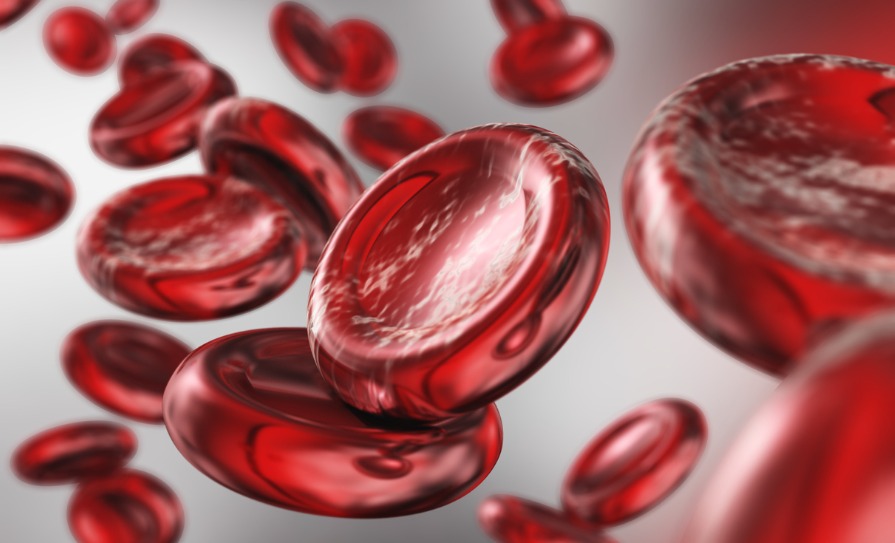
Attendees at the recent HAI Annual Meeting heard a talk by internationally renowned haematologist
Dr Othman Al-Sawaf on current and future trends in CLL. Pat Kelly reports
The recent Haematology Association of Ireland (HAI) Annual Meeting 2022 heard from a range of eminent national and international speakers on a range of topics relevant for haematology healthcare professionals. The event, held over two days on 14-15 October, featured presentations on specialist areas of haematology, with the ultimate aim of improving patient care.
Among the distinguished international speakers at the event was Dr Othman Al-Sawaf, Haematologist and Medical Oncologist at the University Hospital Cologne, Germany, who spoke on the topic of ‘Chronic Lymphocytic Leukeamia (CLL): State-of-the-Art and Future Trends’.
In his talk, Dr Al-Sawaf described how there are a number of randomised phase 3 studies ongoing at the moment in this area and described how “CLL is a great example of how good evidence and very well-conducted randomised phase 3 studies have clarified which treatments actually bring benefits for our patients”.
He provided an overview of the European Society for Medical Oncology (ESMO) guidelines and explained that treatment algorithms have become much more simple in CLL.
Across all settings, the use of targeted agents is recommended and “basically, the differentiation we see with high-risk and low-risk disease is mainly driven for the minor role of chemo-monotherapy, which is playing a less important role nowadays”, he said.
Clinical scenarios
Dr Al-Sawaf described a number of typical clinical scenarios involving both younger, fitter patients and those who are older and have comorbidities. He told the attendees: “We see more secondary malignancies in patients who receive chemo-monotherapy, so even a patient who might achieve very long-term remission for 10 or more years after receiving [triple therapy] in the context of mutated IgHV [immunoglobulin heavy chain variable]; these patients have a substantially increased risk of experiencing a secondary AML [acute myeloid leukemia], for example.
“This is of course a much bigger challenge clinically than a simple relapse of the CLL, which can still be salvaged in most cases,” he said.
Dr Al-Sawaf briefly discussed a number of combination therapies and told the conference: “Another aspect of combination therapies in CLL has become more evident for us in Europe, because venclyxto plus ibrutinib has now been approved by the EMA [European Medicines Agency],” he said.
“This is a combination without a CD20 antibody in the frontline setting, and this is based on a few datasets, mainly from the phase 2 CAPTIVATE study and the phase 3 GLOW study.”
He briefly outlined the study designs and described how the results of the GLOW study suggested the benefits and efficacy of fixed-duration therapy.
“The study showed that progression-free survival after venclyxto plus ibrutinib therapy is significantly longer than when you use chemo-monotherapy,” he said.
“Targeted therapies have already clearly shown their benefits in the relapse refractory setting… studies have used fixed-duration approaches with venclyxto plus rituximab [compared to other therapies] and we see deeper remissions at the end of combination therapy with venclyxto plus rituximab, which, similar to the frontline setting, translates into longer progression-free survival.”
Key agents
Dr Al-Sawaf summarised by telling the conference: “To sum-up the data, we can see that the key agents that we have in CLL are BTK [Bruton’s tyrosine kinase] inhibitors, BCL2 inhibitors, and [anti-]CD20 antibodies,” he told the conference.
“We have the two paradigms of continuous therapy against limited-duration therapy, and we can see that minimal residual disease in the frontline setting and in the relapse setting is a key prognostic factor.”
Dr Al-Sawaf continued: “We can also appreciate from all the data we have seen that there are still key questions that remain open in the field around the benefits of MRD [minimal residual disease] guided therapy and the benefits of continuous versus limited-duration therapy… and of course, there is the question of what happens after that – what happens to the patients who are double-refractory.
“These are still open questions that we need to address in the future, so there is still a lot for us to do to improve the care we provide for our patients.”
During a lively interactive Q&A session following his talk, Dr Al-Sawaf was asked, in the context of available effective, low-toxicity, finite-duration treatments, whether it is time to look at when CLL should be treated.
“This is exactly what we need to do, because previously in the field of asymptomatic early-stage disease, all studies have failed in showing an overall survival advantage, or even differences in things like secondary malignancies,” Dr Al-Sawaf replied.
“Studies have looked at asymptomatic disease with high-risk features and did not see that using FCR [fludarabine; cyclophosphamide; rituximab] or any kind of chemotherapy in the asymptomatic setting would extend overall survival….”
“We know that if you have a patient with high-risk disease with TP53 aberration, if you give FCR to these patients, the size of the aggressive clones increases by 10-fold or more after one year of treatment,” Dr Al-Sawaf continued.
“There is a tremendous selective pressure due to chemotherapy because these aggressive clones resist the chemotherapy and therefore have a chance to outgrow the rest.
“With targeted therapies, we haven’t seen this phenomenon. With venclyxto plus ibrutinib, the size of these clones, if the patients already have up-front TP3 aberrations, does not change at relapse or after a year of treatment, for example, so it stays very stable. So in that sense, we don’t have that kind of selective pressure.”





Leave a Reply
You must be logged in to post a comment.